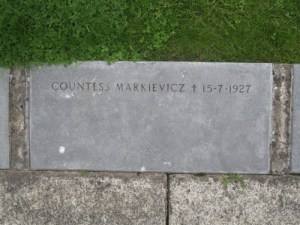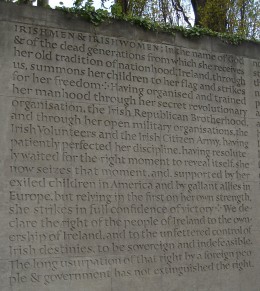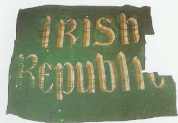The concluding article in this three-part series looks at the feminist movement and the feminist press and their role in the lead-up to the 1916 revolution.
The Irish Feminist Movement 1896-1916
It is easy to imagine that the subordinate status of women in post-independence Ireland was just an extension of the past, the result of a slower development of feminist thought and activism in Ireland than in, for example, Europe or the USA, but nothing could be further from the truth. That mistaken belief arises from a defective and twisted official historical narrative influenced in no small part by the ‘special position’ accorded to the ultra-conservative Catholic Church, post-independence. In fact, the feminist movement in Ireland between the late 19th century and the signing of the Anglo-Irish Treaty in December 1921 was among the most advanced in the world at that time. While some Irish feminists were simply looking for the extension to women of the franchise – the right to vote, many feminists were looking for more profound change than that, including the right to equal status with men, better access to education, better health provision for women and children, an end to discriminatory laws and practices as they affected women, alleviation of poverty and disease, etc.
During that period, many women sought out causes and campaigns to become active in. Right from the start, women had become involved in organisations that were open to them, for example in the Gaelic League and the Literary Societies, and many engaged in writing for, and producing too, a wide range of newspapers and other publications. Often it was women who provided the energy to put ideas into action and put organisations into place, organisations which would later be of pivotal importance for the separatist and labour causes. They campaigned against recruitment during the Boer War and the First World War, and against visits by members of the British royal family.
It was arising out of just such a visit that a number of women gathered on Easter Sunday 1900 in the rooms of the Celtic Literary Society, and formed an ad hoc committee, later to be known as the ‘Patriotic Children’s Treat Committee, with Maud Gonne as the unanimous choice for president. The committee was formed to provide a treat for children who had stayed away from an official function during the visit of Queen Victoria some weeks earlier. By the 30th of June, 25,000 children had registered for inclusion, and the event was held in Clonturk Park on the Sunday following the Wolfe Tone commemoration at Bodenstown. In The Workers’ Republic, James Connolly had this to say – “Last week we witnessed in Dublin the first political parade of the coming generation. Between twenty-five and thirty thousand children turned out and walked in processional order through the streets of the city, to show the world that British Imperialism had cast no glamour over their young minds. And that in the person of Her Britannic Majesty they recognised only a woman – no better than the mothers who bore them, if as good. It was a great sight to see the little rebels taking possession of the city – a sight more promising for the future of the country than any we can remember”.
When the committee had completed this work, they realised that they had skills and talents which should be further utilised. A National Women’s Committee was formed which led, at the beginning of October, to the inaugural meeting of Inghinidhe na hEireann (Daughters of Ireland). The Inghinidhe had as their aims: to re-establish the independence of Ireland; to actively promote the study of Irish language, literature, music, history and art; to discourage interest in English popular culture; to support Irish industry. Besides pursuing their aims, and in the process influencing the way Irish people thought of themselves, the Inghinidhe also gave many women the opportunity to find and use their talents in public speaking, and as organisers, leaders, teachers and journalists. They provided free classes in Irish, history and music to children over the age of nine. Historian Margaret Ward quotes a friend of Maud Gonne’s, who taught history in such a class, describing a typical scene – “In a room perched at the head of a rickety staircase and overlooking a narrow street, I have about eighty denizens of untamed Dublin: newsboys, children who have played in street alleys all their lives, young patriot girls and boys who can scarcely write their own names. Outside there is a continuous din of street cries and rumbling carts. It is almost impossible to shout against it if the windows are open, and more impossible to speak in the smother of dust if the windows are shut. Everyone is standing, closely packed – no room for chairs!”.
In 1902, the Inghinidhe voted to join Cumann na nGhaedheal. In 1907 the Dungannon Clubs unified with Cumann na nGhaedheal as the Sinn Fein League; a year later, after merging with the National Council, the group became Sinn Fein. From its beginning, women were voted onto the executive of Sinn Féin and although Sinn Féin was promoting a conservative social policy, members of the Inghinidhe pursued their own. Helena Molony, for instance, adopted an increasingly socialist stance, and as time passed she moved over into the Connolly camp and later into the Irish Citizen Army. She devoted much of her energy to the women’s labour movement and to the Irish Women Worker’s Union (IWWU), which was affiliated to the ITGWU having been started by Jim Larkin’s sister, Delia. Helena Molony took over as leader of the IWWU in 1915.
 There was also in Ireland a strong women’s franchise movement, with the Irish Women’s Franchise League (IWFL) the most militant of a large number of groups throughout the country. It was founded by Hanna Sheehy-Skeffington and Margaret Cousins in 1908 and was pledged to: non-party independent action; vigorous agitation; organisation of women; education of public opinion. Although most of the members were nationalists, women of all political persuasions were welcomed. Within a short time 800 members were on the register. The League organised militant action on a regular basis, both in Ireland and in England, and members of the League were regularly imprisoned. They adopted the tactic of the hunger strike, which the authorities countered first through forcible feeding, and also through early release and re-arrest, or the ‘cat and mouse’ tactic.
There was also in Ireland a strong women’s franchise movement, with the Irish Women’s Franchise League (IWFL) the most militant of a large number of groups throughout the country. It was founded by Hanna Sheehy-Skeffington and Margaret Cousins in 1908 and was pledged to: non-party independent action; vigorous agitation; organisation of women; education of public opinion. Although most of the members were nationalists, women of all political persuasions were welcomed. Within a short time 800 members were on the register. The League organised militant action on a regular basis, both in Ireland and in England, and members of the League were regularly imprisoned. They adopted the tactic of the hunger strike, which the authorities countered first through forcible feeding, and also through early release and re-arrest, or the ‘cat and mouse’ tactic.
The other main women’s organisation which requires mention is Cumann na mBan, formed in April 1914, and affiliated to the Irish Volunteers. Each branch of the Cumann was under the military orders of a corresponding Volunteer branch, and this led to acrimony between the IWFL and the Cumann. The IWFL maintained that the women’s franchise issue should not be subjugated to the separatist cause, whereas the Cumann believed that the franchise would be won through independence which must be the priority. Unlike the Irish Citizen Army, the members of Cumann na mBan were not trained as soldiers, but were there to support the men of the Irish Volunteer army. The members, many of whom were or had been members of the IWFL accepted that, but the split must have damaged both organisations. It was a pity that in the last years before the revolution of Easter 1916, women, who had done so much to bring together various strands within the separatist and labour movements should have found themselves in conflict with one another. But in its own way, it illustrates other difficulties which would lie ahead.
Stephen Browne SJ, who provided an index of Irish print media in 1937 wrote – ‘It is interesting and may be profitable to trace through the course of Irish history those various currents of tradition and thought whose confluence (without commingling) makes the Ireland of to-day. One can distinguish many such currents – religious, political, social, cultural. Some of them may, at certain periods of our history, be hard to trace: they seem to lose themselves in the sands, yet may still be flowing beneath the surface, to well up at future time. Sometimes two or more currents seem to merge and blend, but again it is only in appearance. Sooner or later they reappear as separate streams…Some have their sources far back in Irish history; others take their rise from some movement, some upheaval, perhaps, at some definite and not far distant period of the past. Some again have their perennial well-springs in human nature itself.’
The Feminist Press
 The Shan Van Vocht
The Shan Van Vocht
The Shan Van Vocht was founded in Belfast in January 1896 by two poets, Alice Milligan, who also wrote under the name Iris Olkyrn, and Anna Johnson who wrote using the pen name Ethna Carberry. Alice Milligan was the daughter of a Protestant clergyman, while Anna Johnson was a Catholic. The paper pulled together in its articles many aspects of life in Ireland – cultural, social, political and historical – and its approach was from within the cultural/nationalist/separatist camp, drawing inspiration from the same political well that James Connolly drew on, including Wolfe Tone, James Fintan Lalor and John Mitchel. It provided a platform for writers such as Connolly, although in his case the editors disassociated themselves from his socialism, and for Douglas Hyde and Arthur Griffith. It also provided a valuable outlet for women writers, and it publicised women’s groups and their campaigns and views.
It championed the work of the literary societies, the Gaelic League, and the Amnesty Association for prisoners in British jails. One of its primary functions was to re-awaken interest in Irish patriots – especially, in readiness for the centenary, the patriots of 1798. It promoted the tending of the graves of patriots, regularly publishing articles such as, in its first issue on page 14, ‘The Neglected Shrines and Sepulchres of Ireland’s Illustrious Dead’.
The Shan Van Vocht was a good read at 20 pages per issue, containing plenty of well-written material, and costing two pence. A typical issue contained the following: ‘The Captain’s Daughter’ (serial); ‘The Lonely One’ (poem); ‘The Rise and Fall of the Fenian Movement of ‘67’ part iv’; ‘Manus O’Mallaghan and the Fairies‘; ‘On Inisheer’ (poem); ‘Willie Kane of the “Northern Star”: How He Escaped the Scaffold’; ‘Irishmen in the Transvaal’; ‘The Burial-Place of the Sheares’; ‘Our National Language’; ‘James Clarence Mangan’; ‘Reviews – The life of Owen Roe O’Neill, The Life and Writings of Fintan Lalor’; ‘Our Notebook’ (Diary and Announcements); ‘The Moonlighters Hound’ (poem); ‘For the Old Land’ (review of the work being done to advance the nationalist cause).
In an editorial ‘Why Must We Strive For Freedom’ on the 7th August 1896, the paper set out what was required of the Irish – ‘…the freedom of Ireland can never be granted as a boon; it must be worked for, prayed for, longed for, night and day unceasingly, and in the end be nobly won by the courage and self reliance and strong arms of her sons from north and south, and east and west, aye, and from the far world’s end, banded together to achieve that aim in steadfast trust and brotherly unity’.
And in February 1897, we get a preview of the policy of Sinn Fein – ‘If we do not set and keep the ball of patriotism rolling ourselves, it is impossible for our nearest and dearest exiles to achieve anything for us. The work is ours and ours alone. To ourselves belong the initiation, control, and direction of whatever movement we consider best adopted to attain our ends’.
While the paper was successful, the editor, in a number of articles, complained of the lack of support that it was getting from the nationalist papers in Dublin. Dr. Mark Ryan of the Irish Republican Brotherhood in London convinced Alice Milligan and Anna Johnson that it was an opportune time to hand on the project to others. He arranged for Arthur Griffith to return from South Africa to take over as editor. From then on the paper was known as the United Irishman.
The Shan Van Vocht had helped to foster interest again in the separatist cause. It had provided Connolly with one of his first opportunities, since coming to Ireland, to present his case to other than a labour audience. It had also linked up with Maud Gonne in Paris and her paper L’Irlande Libre and exchanged material for publication. It had helped to establish an understanding of the work of various cultural and political groups and to encourage participation in them. The two women had done their work well, in the process inspiring other women who would take the work forward.

Bean na hEireann frontpage
Bean na hEireann (The Woman of Ireland)
The idea of producing a monthly journal as the organ of Inghinidhe na hEireann came from Helena Molony, the organisation’s secretary. At a meeting attended by Constance Markievicz and Sydney Gifford, the decision was taken to produce what they advertised as the first Irish women’s paper. Published between 1908 and 1911, Bean na hEireann (The Woman of Ireland) stood for the ‘freedom for Our Nation and the complete removal of all disabilities to our sex’. It would describe itself in a later issue as ‘the first and only Nationalist Woman’s paper’. Maud Gonne was the publisher, and Helena Molony was editor. She, having drawn closer to the labour position, had difficulties with Cumann na nGhaedheal with which the Inghinidhe was linked, and this had given her the impetus to propose the launching of Bean na hEireann. She is quoted by historian Margaret Ward on this issue – ‘The United Irishman, starting as a physical force, separatist journal, had gradually changed its policy to one of reactionary social and dual-kingdom ideas…We wanted a paper to counter-act this. We wanted it to be a women’s paper, advocating militancy, separatism and feminism‘.
The Bean included short stories and poems, usually with a nationalist flavour, articles on aspects of patriotism or history, a cookery column, a children’s page, fashion notes, Irish language features, and a gardening feature ‘Woman with a Garden’ by Constance Markievicz (writing as ‘Maca’) which included tips on the extermination of slugs, but with a comparison drawn to British soldiers. The paper also carried ‘Labour Notes’ by ‘A Worker’ (Helena Molony) and increasingly carried contributions on women, their working conditions and their need to be equally organised and represented by the Labour movement. Some members of the Inghinidhe, including Helena Molony and Constance Markievicz, drew ever closer to involvement with James Connolly and the Labour movement and ultimately with active service in the 1916 revolution with the Irish Citizen Army.
There was no doubting the militant tone of the Bean. In response to an article on ‘The Police and the Nation’, a correspondent replied – ‘The article on street-fighting in Bean na hEireann a couple of months ago struck the right note…I would go further and say that in every town and parish in Ireland in which there is some national spirit left, the art of fighting the police should be assiduously cultivated and perfected’.
The Bean took the line that women’s emancipation would come with national independence, a nationalist-feminist line very similar to what that of Cumann na mBan members would be. This led to difficulties with suffragettes such as Mary McSwiney and Hanna Sheehy Skeffington, difficulties which got an airing in a lively debate over a period of time in the pages of the Bean. The paper was able to sustain its own argument, but its life was drawing to a close in any event. Maud Gonne’s prolonged absence in France threw too much onto Helena Molony’s shoulders and she had other work to do elsewhere, particularly in the women’s labour movement. The paper issued its last edition in February 1911. By then, the I.R.B. had launched their new militant separatist paper Irish Freedom thus ensuring that their message would continue to counter the moderate line taken by Arthur Griffith’s publications.
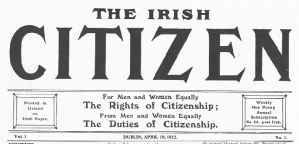 The Irish Citizen
The Irish Citizen
Following the demise of Bean na hEireann in 1911, leaving a gap in the market for a feminist newspaper, Hanna Sheehy-Skeffington and Margaret Cousins launched the feminist newspaper The Irish Citizen which carried the motto – ‘For Men and Women Equally The Rights of Citizenship; For Men and Women Equally The Duties of Citizenship’.
Hanna Sheehy-Skeffington was among the first Irish female university graduates, achieving a BA in Languages in 1899 and later an MA in Modern Languages in 1902. A year earlier she had founded the Women Graduates’ Association, and in 1903 married Frances Skeffington, a university registrar and a journalist with socialist and pacifist views. They each adopted the other’s surname as a mark of equality. She was a contributor of articles on education and feminism to both Bean na hEireann and The Nation, and was also a founding member of the Irish Women Workers’ Union and a close associate of James Connolly. During the 1913 Lockout she worked in the soup-kitchens in Liberty Hall.
The labour movement provided a meeting place for radical women before, during and after the Lockout in which Hanna, Constance Markevicz, Helena Molony, Madeleine ffrench-Mullen and Dr Kathleen Lynn played prominent roles and all became close to Connolly who was himself a committed feminist. The Irish Citizen described him as “the soundest and most thoroughgoing feminist among all the Irish labour men”, a comment that is hardly surprising given his work for women workers and his writings on the subject of women’s rights, for instance; “None so fitted to break the chains as they who wear them, none so well equipped to decide what is a fetter. In its march towards freedom, the working class of Ireland must cheer on the efforts of those women who, feeling on their souls and bodies the fetters of the ages, have arisen to strike them off.” The close relationship between the Irish Women’s Franchise League which Hanna co-founded, and the labour movement, is summed up in the League’s Annual Report for 1913 in which is said ‘The working classes particularly have shown themselves friendly, and have rallied to our support whenever called upon’. It was mainly the labour movement that provided protection for the feminists at public meetings when they came under attack from mobs.
The Irish Citizen promoted more than the vote for women in campaigning for equal citizenship – a concept that was later firmly embedded in the Proclamation of the Irish Republic. Hanna, and the Irish Women’s Franchise League that she co-founded, supported militant feminist activity, although she was opposed to militarism. An advocate of window smashing as a form of protest, she pointed out that men who disapproved of this tactic “only applaud the stone-thrower as long as the missile is flung for them and not at them”. Hanna was herself imprisoned for five days in 1912 for breaking windows at the War Office after women were excluded from the franchise in the Home Rule Bill. She was later jailed after attempting to push a leaflet on the British conservative leader Bonar Law but was released after five days, having gone on hunger strike.
* * * * * * * * * * * * * *
What is clear from an examination of the feminist movement and the various publications associated with it is that Irish women were from the late 19th century increasingly involved in the move towards revolution as authors, publishers, educators, activists, agitators, thinkers, prisoners, hunger-strikers, allies and, ultimately, as revolutionary soldiers. What is also clear from this series of articles is that the three strands that came together in that revolution – advanced-nationalist, advanced-feminist and organised labour – had one prominent common denominator, James Connolly. It is difficult to imagine the revolution taking place without his capacity to straddle those three movements and draw them to a common cause, the creation of an independent republic of equal citizens with guarantees of religious and civil liberties, equal opportunities, and sovereign ownership by the citizens of the national territory and its resources.
Connolly had laid out that project of drawing the various radical strands together in 1897; “we will, as the true revolutionist should ever do, have called into action on our side the entire sum of all the forces and factors of social and political discontent”. The evidence of history is that the support of radical feminist women was absolutely crucial to the success of his project, and he certainly repaid their trust by making explicit the feminist content of the Proclamation of the Irish Republic. The feminist women, in turn, repaid the trust he displayed in them in being the most ardent defenders of that Irish Republic long after many of the men had fallen away and joined the brutal counter-revolution which began with the signing of the 1921 Anglo-Irish Treaty. It was, of course, the triumph of that counter-revolution over progressive forces that determined the fate of Irish women, that effectively silenced or exiled them, and that cast them into the role of second-class citizens in what purported to be a republic, for most of the 90 years since independence. But they rose again, and the work continues! It is worth re-reading that quote from Stephen Browne SJ again –
‘It is interesting and may be profitable to trace through the course of Irish history those various currents of tradition and thought whose confluence (without commingling) makes the Ireland of to-day. One can distinguish many such currents – religious, political, social, cultural. Some of them may, at certain periods of our history, be hard to trace: they seem to lose themselves in the sands, yet may still be flowing beneath the surface, to well up at future time. Sometimes two or more currents seem to merge and blend, but again it is only in appearance. Sooner or later they reappear as separate streams…Some have their sources far back in Irish history; others take their rise from some movement, some upheaval, perhaps, at some definite and not far distant period of the past. Some again have their perennial well-springs in human nature itself.’
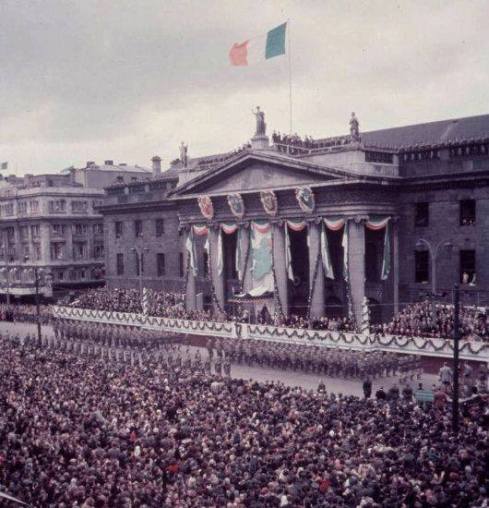
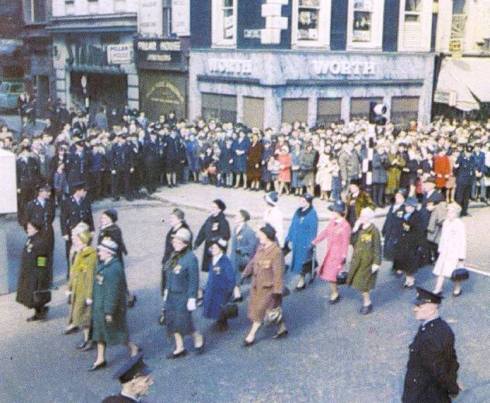
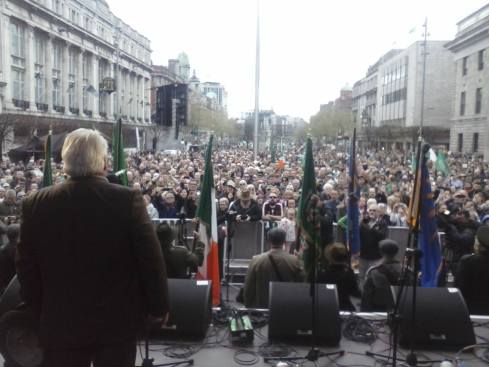
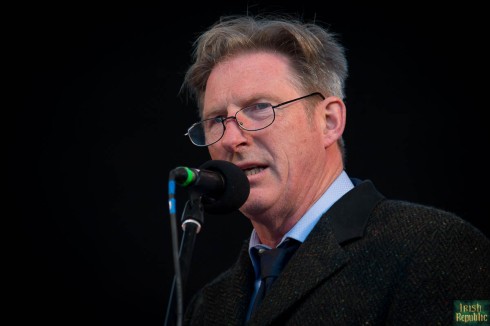
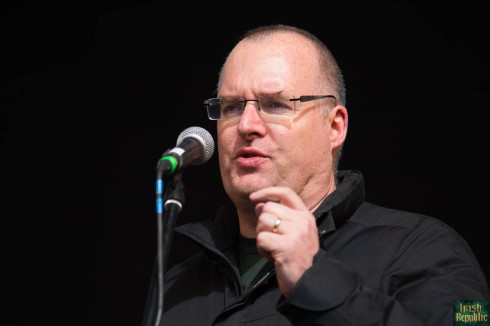
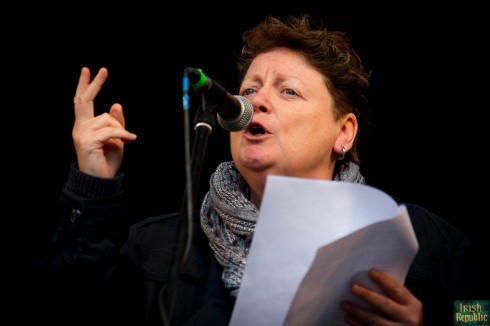
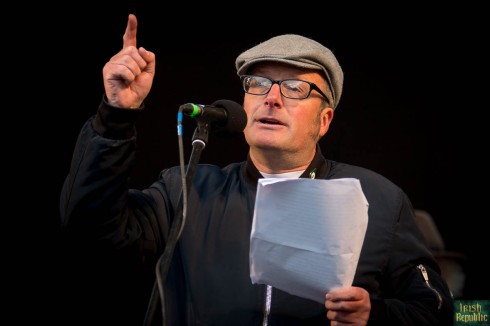
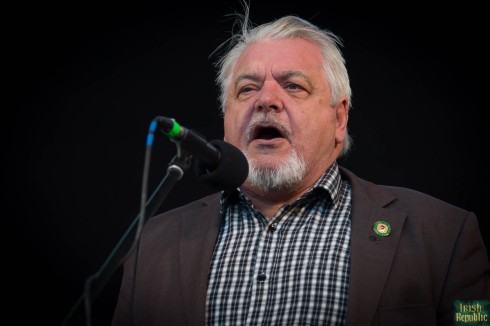
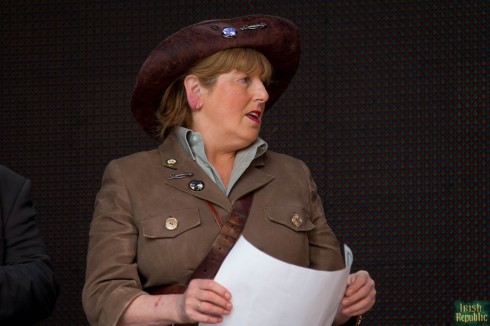
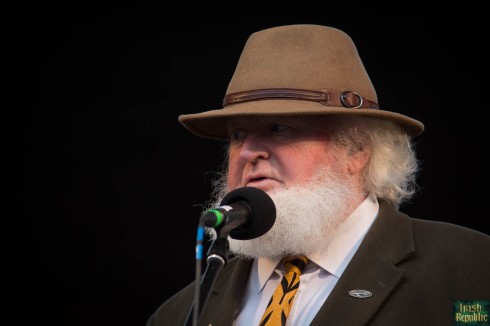
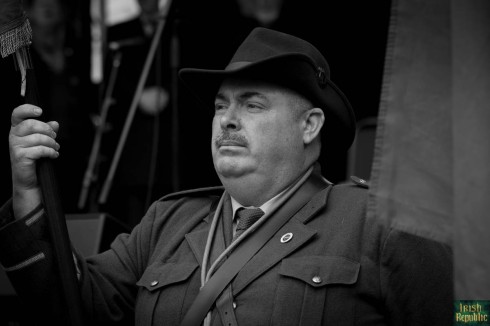
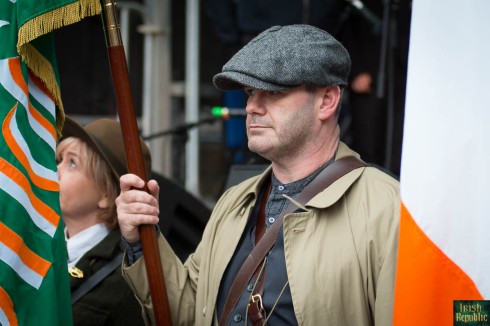
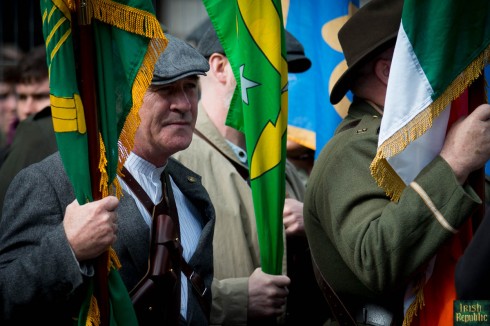
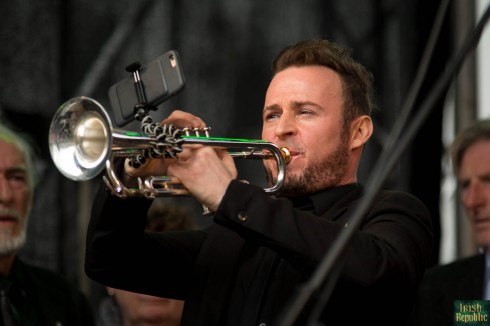
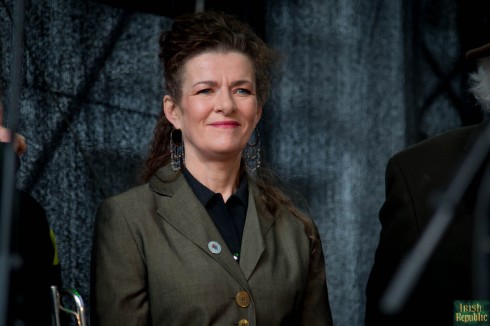
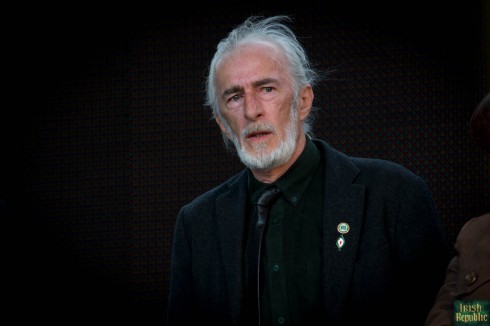
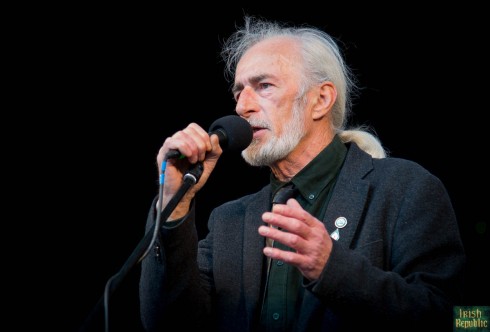
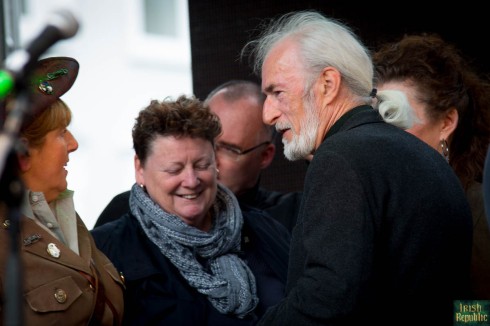

 There was also in Ireland a strong women’s franchise movement, with the Irish Women’s Franchise League (IWFL) the most militant of a large number of groups throughout the country. It was founded by Hanna Sheehy-Skeffington and Margaret Cousins in 1908 and was pledged to: non-party independent action; vigorous agitation; organisation of women; education of public opinion. Although most of the members were nationalists, women of all political persuasions were welcomed. Within a short time 800 members were on the register. The League organised militant action on a regular basis, both in Ireland and in England, and members of the League were regularly imprisoned. They adopted the tactic of the hunger strike, which the authorities countered first through forcible feeding, and also through early release and re-arrest, or the ‘cat and mouse’ tactic.
There was also in Ireland a strong women’s franchise movement, with the Irish Women’s Franchise League (IWFL) the most militant of a large number of groups throughout the country. It was founded by Hanna Sheehy-Skeffington and Margaret Cousins in 1908 and was pledged to: non-party independent action; vigorous agitation; organisation of women; education of public opinion. Although most of the members were nationalists, women of all political persuasions were welcomed. Within a short time 800 members were on the register. The League organised militant action on a regular basis, both in Ireland and in England, and members of the League were regularly imprisoned. They adopted the tactic of the hunger strike, which the authorities countered first through forcible feeding, and also through early release and re-arrest, or the ‘cat and mouse’ tactic. The Shan Van Vocht
The Shan Van Vocht
 The Irish Citizen
The Irish Citizen